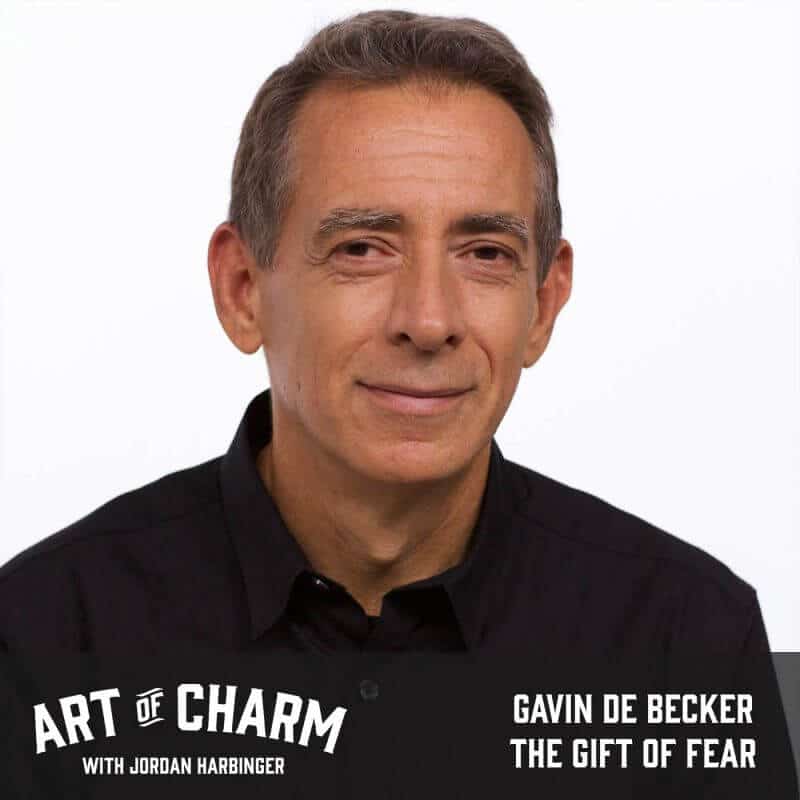Gavin de Becker is the the author of The Gift of Fear and Other Survival Signals That Protect Us from Violence and the security pioneer who designed the MOSAIC Threat Assessment Systems used at the top levels of government. This is the second part of a two-part series (check out part one here).
The Cheat Sheet:
- Why is “no” the end of the discussion for a man, but the beginning of a negotiation for a woman in our culture?
- Understand why you should be wary of the unsolicited promise.
- Should we try to join our intuition to our intellect, or do the two work better on their own?
- Learn the difference between worry and fear — why worrying is ultimately useless while fear can save your life.
- Try the Rule of Opposites exercise to calibrate your intuition in the moment.
- And so much more…
[aoc-subscribe]
Download Episode Worksheet Here
Violence is built into the human mind. Try to imagine the most grisly way of being violated by another human being; since you’re able to contemplate it in the first place, it’s likely been done to someone — or maybe even many people — in the past. It’s part of human nature.
The Gift of Fear and Other Survival Signals That Protect Us from Violence author and MOSAIC Threat Assessment Systems developer Gavin de Becker joins the show to discuss his decades of experience in protecting people from the top levels of government to victims of spousal abuse. Think of this as sort of an AoC toolbox episode in two parts (check out part one here) for safety — for men and women. Learn and enjoy!
More About This Show
As we learned in the first part of this two-part series, violence is a reality. And like any other unpleasant reality, it’s better to be prepared for its possibility than caught off guard by its eventuality. Gavin de Becker, author of The Gift of Fear and Other Survival Signals That Protect Us from Violence and the security pioneer who designed the MOSAIC Threat Assessment Systems that’s been relied upon by the top levels of government since the early ’80s, understands better than most what it takes to second guess the unthinkable.
But just by being among the population that evolved to survive countless dangers throughout human history, we all have the intuition to spot threats to our safety. The problem is that we often ignore this intuition because we can’t always logically explain why a person or a situation feels a little off to us, so we explain it away — often to regret this decision in hindsight. Gavin relays the story of a woman whose intuition tried to warn her that a man who was seemingly friendly and helpful on the surface intended to do her harm. There was nothing obvious to suggest this; it was only in reconstructing events — after he did indeed do her harm — that the warnings were clear.
It was only halfway through the full ordeal that she let her intuition guide her, which proved to be her salvation. Gavin says: “She said to me later that fear had replaced every feeling in her body. She said, ‘Like an animal opening up inside me, it used its muscles to move me…and I had nothing to do with it. I was a passenger.’ That’s what can happen when you listen to fear without question — when fear says ‘Shut up and do what I say and I’ll get you out of here.'”
But fear shouldn’t be confused with worry — which is its ultimately useless sibling. “Worry is a waste of time,” says Gavin. “In fact, the root of that word means ‘to chew on.’ Its original usage was that people would talk about a dog worrying a shoe — it meant chewing on the shoe. It doesn’t get you anything and nobody will ever thank you for doing it.”
So what’s the antidote to worry? Action. If you find yourself worrying but there’s no action you could possibly take to counter its consequences, try to talk yourself out of worrying about it, because you’re just wasting time that could be better spent addressing problems that actually have solutions.
“Worry is not an intuitive signal,” says Gavin. “Fear is an intuitive signal. Fear is a signal in the presence of danger, meaning you perceive it right now — you see it, you sense it, you smell it, you feel it, you’re aware of it. But worry is always based on something in your imagination or your memory. It’s never about the present moment. Worry and anxiety both are not intuitive signals.”
Listen to this episode of The Art of Charm in its entirety to learn more about why we should consider the unsolicited promise a red flag, the difference between worry and fear, how predators work with the word “no” as part of their psychological strategy, how “no” is perceived differently depending on who’s saying it, how intellect can work against us in the heat of the moment, how we can calibrate our intuition with the easy Rule of Opposites exercise, the most important thing we can do to cut potentially threatening people out of our lives, the intimidation versus threats distinction, why threat is not the same thing as risk, and lots more.
THANKS, GAVIN DE BECKER!
Resources from This Episode:
- Episode 579: The Gift of Fear Pt. 1
- The Gift of Fear and Other Survival Signals That Protect Us from Violence by Gavin de Becker
- Other books by Gavin de Becker
- Gavin de Becker & Associates
- MOSAIC Threat Assessment Systems
You’ll also like:
- The Art of Charm Challenge (click here or text 38470 in the US)
- The Art of Charm Bootcamps
- Best of The Art of Charm Podcast
- The Art of Charm Toolbox
- The Art of Charm Toolbox for Women
- Find out more about the team who makes The Art of Charm podcast here!
On your phone? Click here to write us a well-deserved iTunes review and help us outrank the riffraff!




